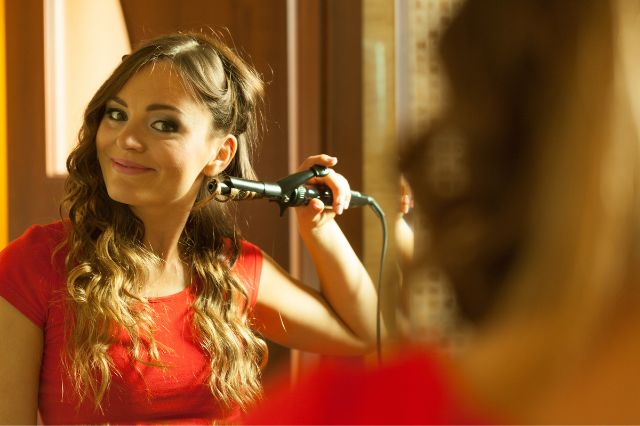The rhythmic beats of salsa, the tantalizing aromas of moles and adobos, and the stunning backdrops of Machu Picchu and Rio – Latin American culture captivates people worldwide with its vibrant beauty and zeal for life.
This allure extends even to the sphere of international relationships, where the concept of mail order Latina brides has become a topic of both intrigue and debate. Beyond the surface thrills, Latin America also offers timeless wisdom for nurturing inner and outer health.
Ancient practices passed down through generations now converge with modern wellness trends, providing natural solutions for beauty, fitness, relationships, and overall well-being.
This article explores the alluring traditions, ancient rituals, and innovations from Latin America that inspire people globally to live their healthiest, most radiant lives.
Ancient Healing Practices
Latin American cultures developed natural healing modalities that predate modern medicine and still offer benefits today.
Yerba Mate: The Tea of the Gods
Sipped daily by indigenous tribes in Paraguay and Argentina, yerba mate tea delivers antioxidants, amino acids, and vitamins for energy and immunity. The leaves come from the naturally caffeinated Ilex paraguariensis plant.
Yerba mate promotes circulation, aids digestion, and helps burn fat as a metabolism booster. Savor it as tereré, a chilled yerba mate tea, or in hot water like normal tea. Yerba mate remains popular in South America and beyond as a healthier coffee alternative.
Jade Rolling: Mayan Beauty Ritual
Jade facial rollers derive from ancient Mayan skincare rituals. These carved jade stones soothe and massage the skin to reduce puffiness and wrinkles. The cooling green mineral also helps treatment serums penetrate deeper.
Keep jade rollers in the fridge for an even more refreshing sensation. Daily jade massage aligns with the Mayan belief in nurturing outer beauty to reflect inner harmony.
Samba and Capoeira: Dance Your Way to Fitness
Brazil’s unique dances offer fun ways to work out. The high kicks and hip sways of samba trace back to African rhythms blended with Brazilian flair. Uptempo capoeira mixes martial arts, acrobatics, and movement to lively music.
Both dances engage the full body – especially core muscles – as part of celebrations and rituals passed down for generations. Channeling Brazil’s active culture, samba, and capoeira classes offer creative cardio options.
Food Trends
Latin American superfoods and cuisine spotlight health along with flavor.
Superfruits of the Amazon
The Amazon rainforest yields antioxidant-rich superfoods prized globally but eaten regularly in South America. Known as “purple gold,” açai berries pack vitamins and omegas to strengthen immunity. Lucuma and camu camu provide vitamin C.
Amazonian dragonfruit, passionfruit, guarana, and cocoa fruits add color and nutrients to smoothies and bowls. Just some of these functional foods contain more antioxidants than blueberries or pomegranates.
Back to Ancient Grains
Quinoa fueled Incan warriors centuries ago. Now this protein-packed seed leads a revival of ancient grains from Amaranth to Teff. Compared to wheat, these grains offer more protein, fiber, vitamins, and minerals.
Foundational to traditional diets in the Andes and Mesoamerica, quinoa and ancient grains add nutrient density to modern recipes too. They accentuate Latin America’s farm-to-table cuisine.
Local Produce Reigns
Latin American cuisine highlights fresh, seasonal ingredients from local fields, orchards, and waters. Markets brim with avocados, tomatoes, squash, herbs, fruits, and vegetables that change with natural growing cycles.
Simple preparations like ceviche and coconuts showcase this produce. Diets rich in local foods mean more nutrients and less preservatives. Eating what is locally abundant also helps reduce the environmental impact of transporting food long distances.
Beauty Secrets
Latin American women are renowned for their natural beauty. Their skincare, haircare, and overall wellness habits help explain why.
Argan Oil Rules
Moroccan argan oil has taken the haircare world by storm. But Latin American women have moisturized their curls with argan oil for ages. Nicknamed “liquid gold,” argan oil tames frizz, hydrates damaged strands, and protects hair from heat styling.
For intense moisture, apply argan oil masks before washing hair. A few drops of this antioxidant and vitamin E-rich elixir also boost radiance as a daily facial serum.
Coffee Grounds for Glowing Skin
Coffee is huge across Latin America – and not just as a drink. Used grounds make an exfoliating scrub that smooths skin and busts cellulite by increasing circulation. Combine fresh grounds with coconut oil or olive oil and gently scrub on cellulite-prone areas, then rinse.
Caffeine helps detoxify and tighten skin. No wonder Brazilian women swear by this home spa treatment before Carnival.
Tanning Through the Ages
Before tanning salons existed, Latin Americans set the bronze standard. Mayans and Aztecs considered darkened skin beautiful and associated it with fertility and vigor.
Later, a tan became trendy among affluent Latin American women as it symbolized luxury leisure time outdoors versus toiling in fields – a status symbol that still influences modern tanning culture.
While indoor tanning carries risks, natural sun exposure in moderation activates beneficial vitamin D. Overall, Latin America’s tanning tradition reveals shifting societal norms around perceived beauty and class.
Relationship Traditions
Latin American family values and gender roles shape perspectives on love and dating.
Family First
Latin cultures venerate family as the ties that bind. Loyalty and closeness to relatives underpin relationships. Large extended families often live together. Parents have significant influence over young adults’ dating choices, and their approval remains important.
Meet-the-family occasions represent serious commitment. While views are modernizing, family bonds still impact couple dynamics.
Defined Gender Roles
Clear divisions of masculine and feminine persist across Latin America. Men lead as strong providers and macho protectors. Women embody ideal maternity as selfless nurturers. Such set gender roles may seem restrictive to outsiders but provide order.
Dating unfolds more formally with men initiating pursuit. While not universally true, defined gender norms can clash with modern egalitarian relationships. The traditional quinceañera coming-of-age ceremony for girls at 15 underscores lingering cultural notions of a woman’s role.
Blending Old and New
Dating norms are gradually changing across Latin cultures. Urbanization, education, and expanding career options empower women especially. Machismo gives way to more equity between partners.
Dating app culture matches young Latin Americans with potential partners across the globe. Yet influences of family opinions and conventional gender dynamics remain – illustrating both evolution and tradition.
Wellness Retreats
Immerse yourself in holistic Latin American wellness with these luxury retreats.
Tierra Santa, Peru
Nestled in the Sacred Valley near Machu Picchu, this haven offers spiritual healing amidst breathtaking vistas. Guided Ayahuasca ceremonies channel ancient wisdom. Yoga sessions draw on Incan motifs. Organic Peruvian meals and luxurious spa treatments round out days focused on contemplation and revitalization.
Costa Rica Yoga Spa
Pamper your body while nourishing your spirit at this lush jungle retreat. Daily yoga and meditation classes meet by the tranquil ocean. Waterfall hikes through the forest culminate in natural hydrotherapy pools. Follow up relaxing massages with farm-to-table cuisine. The perfect setting to find your zen.
Rancho La Puerta, Mexico
At this storied retreat outside Tecate, each day starts with sunrise hikes and yoga sessions focused on mind-body balance. Cooking classes highlight fresh local produce while the renowned spa offers both modern and ancient healing therapies. Participate in dance classes embracing Mexico’s traditional Ballet Folklórico.
Conclusion
Latin America overflows with captivating cultures, from the mysticism of ancient civilizations to the sparkling energy of modern capitals. Beyond the surface thrills, the region also proffers timeless wisdom for nurturing beauty, health, and spirituality.
Ancient healing plants, indigenous wellness rituals, wholesome traditional cuisine, rainforest superfoods, and retreats immersed in nature reveal Latin America as a destination for both outer and inner rejuvenation.
The continent’s ancient practices converge with modern self-care methods to provide natural solutions that resonate globally. Embracing Latin America’s holistic healing heritage helps us reconnect with the best version of ourselves.







Leave a Comment